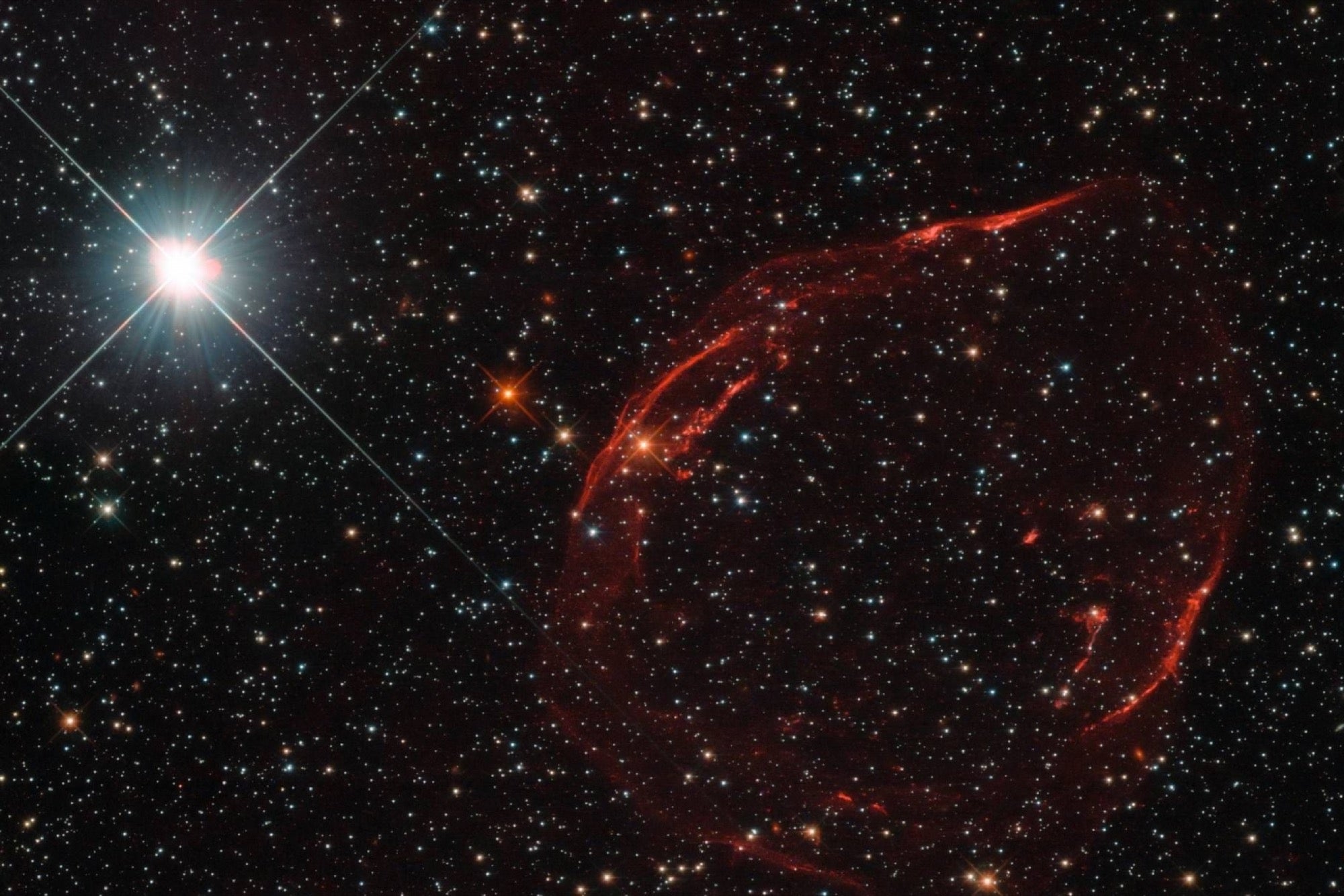15 Times NASA's Tweets Could Have Been Poetry Get inspired by these unexpectedly beautiful tweets.
By Nina Zipkin

You would expect that the folks at NASA to be experts in all things STEM, but it turns out that the agency's social media team have the souls of poets.
Mixed in with posts about new discoveries, more earth-bound projects and Q&A's with the astronauts on board the International Space Station are creative missives that briefly encapsulate the otherworldly images captured by NASA's powerful telescopes and spacecraft.
Check out some of NASA's most beautiful tweets below.
Related: 18 Unforgettable Moments in Space Exploration
Stars appear to create a misty fog in this galaxy, an irregular island in a sea of space: https://t.co/JzI2GVw5NQ pic.twitter.com/cYVXUVb3On
— NASA (@NASA) August 28, 2016
Puzzle this: Massive star deep in the Milky Way shows signs of being very old & very young: https://t.co/Mtlc31jjsb pic.twitter.com/SIFMbdwPnP
— NASA (@NASA) August 30, 2016
.@NASA_Hubble shows a small, very dense star that ripped itself apart thousands of years ago https://t.co/34r76C54uB pic.twitter.com/6TIQzCndGM
— NASA (@NASA) August 21, 2016
Summer is the season for electric-blue sunsets created by a cloud type that gives clues on how the atmosphere works.https://t.co/nvz3Cw41z9
— NASA (@NASA) August 16, 2016
Strands & arches of plasma streamed above the edge of the sun, spotted by @NASASunEarth: https://t.co/rZl1Po9voh pic.twitter.com/vaDsqhjfwx
— NASA (@NASA) August 15, 2016
Like cosmic dancers, stars of the Pleiades cluster spin, but at different speeds. Details: https://t.co/29XV8Aqdwx pic.twitter.com/0Fe2RmO4mT
— NASA (@NASA) August 14, 2016
This lopsided galaxy shows patches of blue, which signals the presence of young, hot stars: https://t.co/1Me3ttxT7Z pic.twitter.com/iWp7jOZ0Cb
— NASA (@NASA) August 12, 2016
2 dwarf galaxies wandered in from cosmic wilderness to nearby "city" packed w/ galaxies: https://t.co/5ezdW8K1wp pic.twitter.com/Cv3SgHWXnS
— NASA (@NASA) August 11, 2016
Cosmic blob & bubble could provide clues on past of a giant black hole & its host galaxy: https://t.co/BqLD0HaWoe pic.twitter.com/AgIoVShczW
— NASA (@NASA) August 10, 2016
Swirling pastels of Saturn's clouds appear majestic in this false-color view: https://t.co/q2RvrHyD7p @CassiniSaturn pic.twitter.com/lgaBXFwDGC
— NASA (@NASA) August 9, 2016
The green curtains of an aurora spanning over Canada, as seen from @Space_Station: https://t.co/KeAwUxk1r5 pic.twitter.com/8PKf75WW18
— NASA (@NASA) August 8, 2016
Jupiter's volcanic moon Io has a thin atmosphere that collapses in the shadow of the planet: https://t.co/uKYqAlYYXJ pic.twitter.com/ZW83kNpflf
— NASA (@NASA) August 2, 2016
Gaze at remnants of a long-dead star. Rippling wisps of ionized gas produce a faint glow: https://t.co/gt2eW1xtus pic.twitter.com/sNUyQGJnrk
— NASA (@NASA) July 29, 2016
Chorus of black holes fills the entire sky -- phenomenon called the cosmic X-ray background: https://t.co/WIsiCjyR9e pic.twitter.com/5MIT23S5kP
— NASA (@NASA) July 28, 2016
Peering deep into the core of the Crab Nebula, @NASA_Hubble reveals its beating heart: https://t.co/MQqwmBgJeU pic.twitter.com/dFytJljnpj
— NASA (@NASA) July 7, 2016











